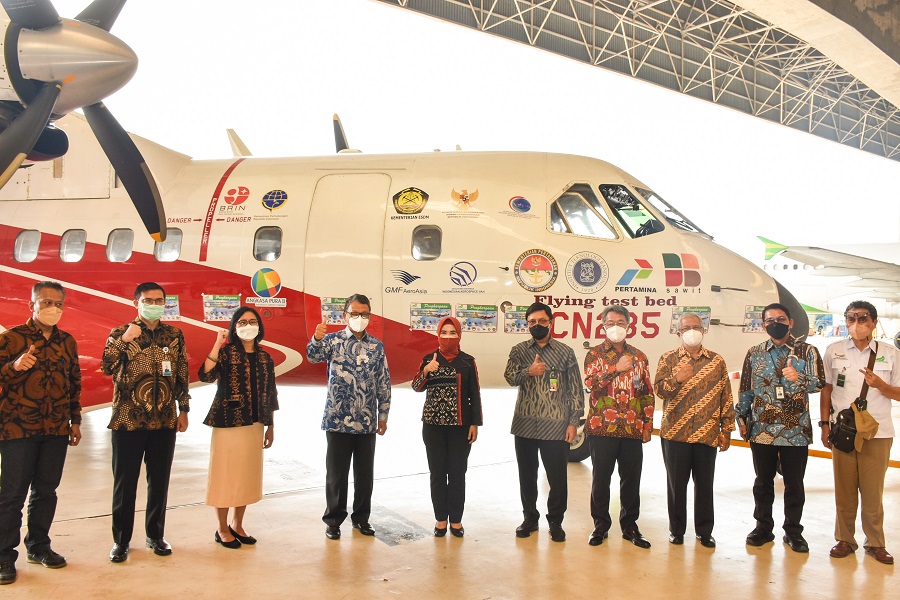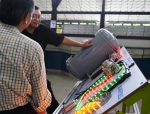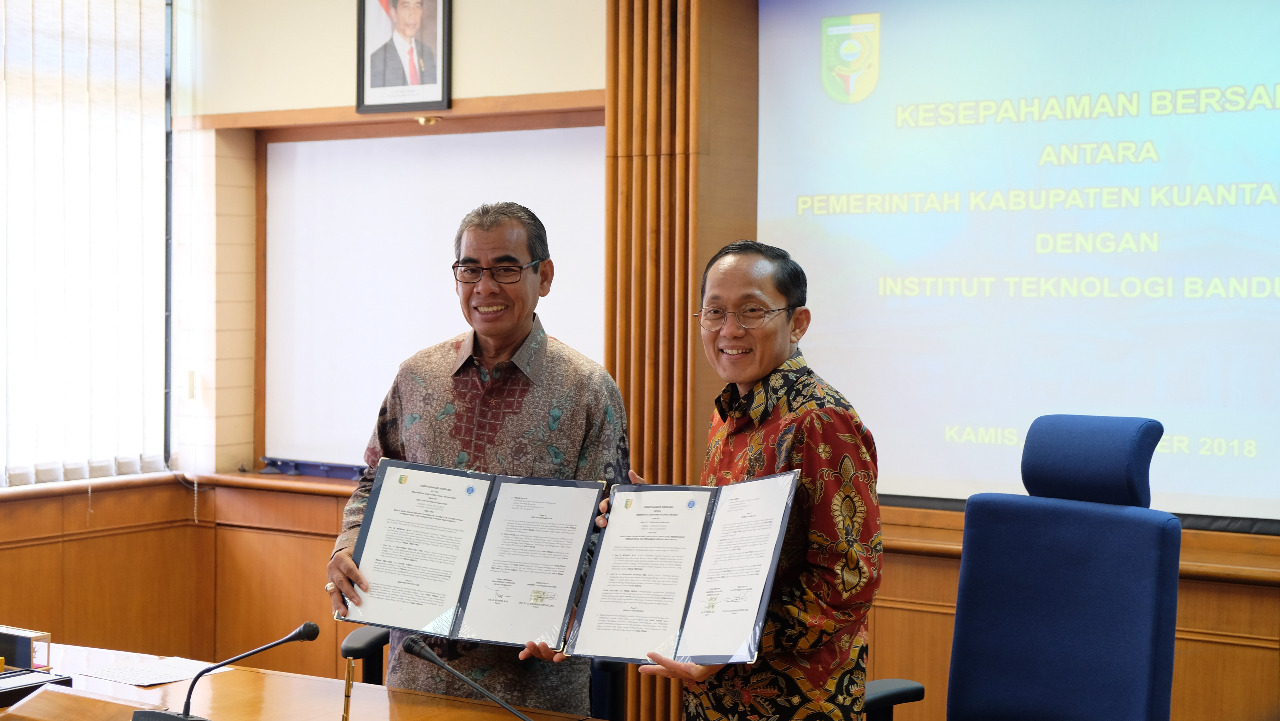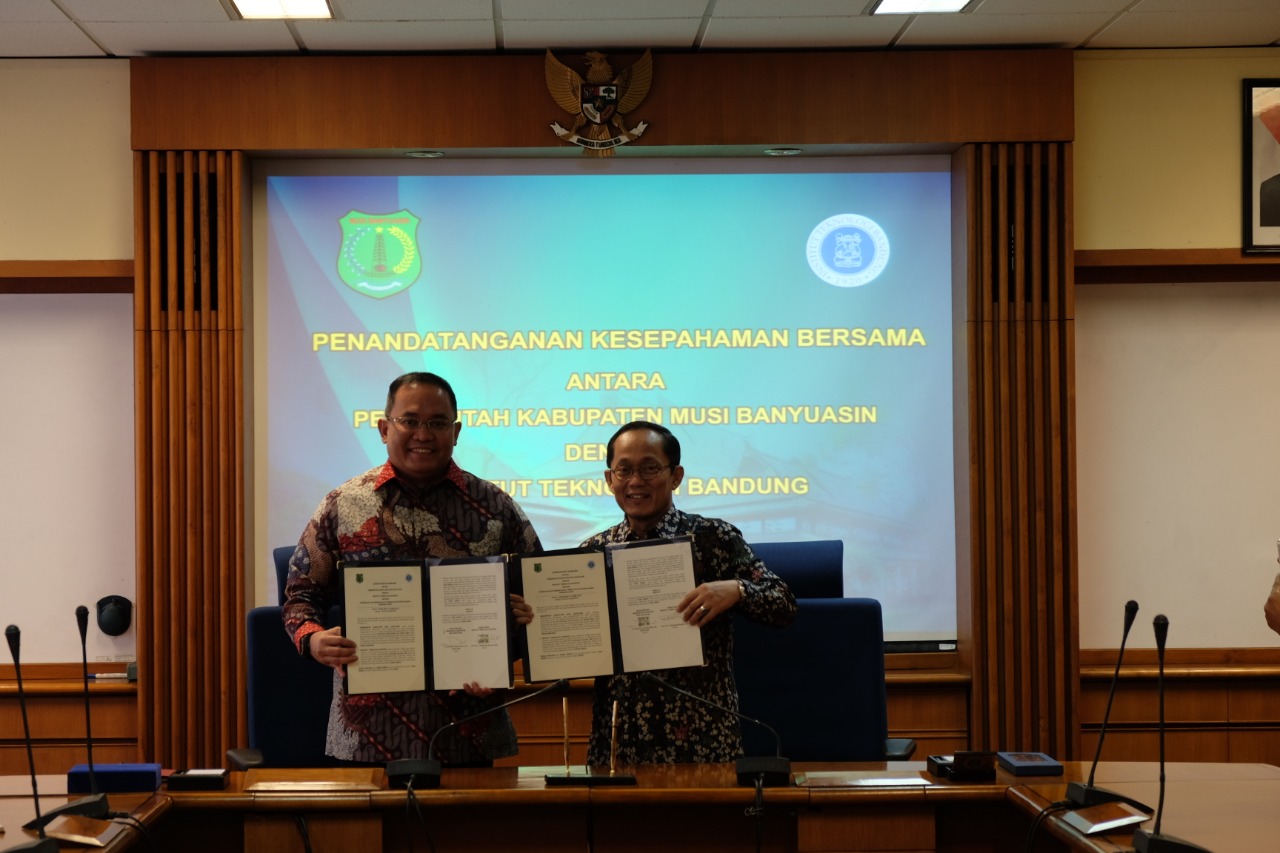In Cooperation with BPDPKS, ITB Developed Palm Gasoline or Bensa

BANDUNG, itb.ac.id – Center for Catalyst Engineering, Institut Teknologi Bandung (ITB) in cooperation with Oil Palm Plantation Fund Management Agency (BPDPKS) succeeded in developing catalyst technology and constructing a prototype of bio-hydrocarbon gasoline production unit that use palm oil as its raw material.
The production demonstration under the name Bensa (Palm Gasoline / Bensin Sawit) was held on 11 January 2022 at the PT Pura Engineering Workshop, Kudus, Central Java. During the demonstration, Bensa trials were carried out using two and four-wheelers. The test result shows that Bensa could be used as a fuel for motorized vehicles.
This demo unit converts industrial vegetable oil (IVO) to palm gasoline through a cracking process that was developed by the Center for Catalyst Engineering (PRK ITB), Chemical Reaction and Catalyst Engineering Laboratory ITB (LTRKK ITB), Bioenergy and Chemurgy Engineering Study Program (TBE) which was led by Prof. Dr. Subagjo. The IVO conversion process to palm gasoline was done inside a reactor that utilizes zeolite-based catalyst which was also developed by PRK ITB and LTRKK ITB.
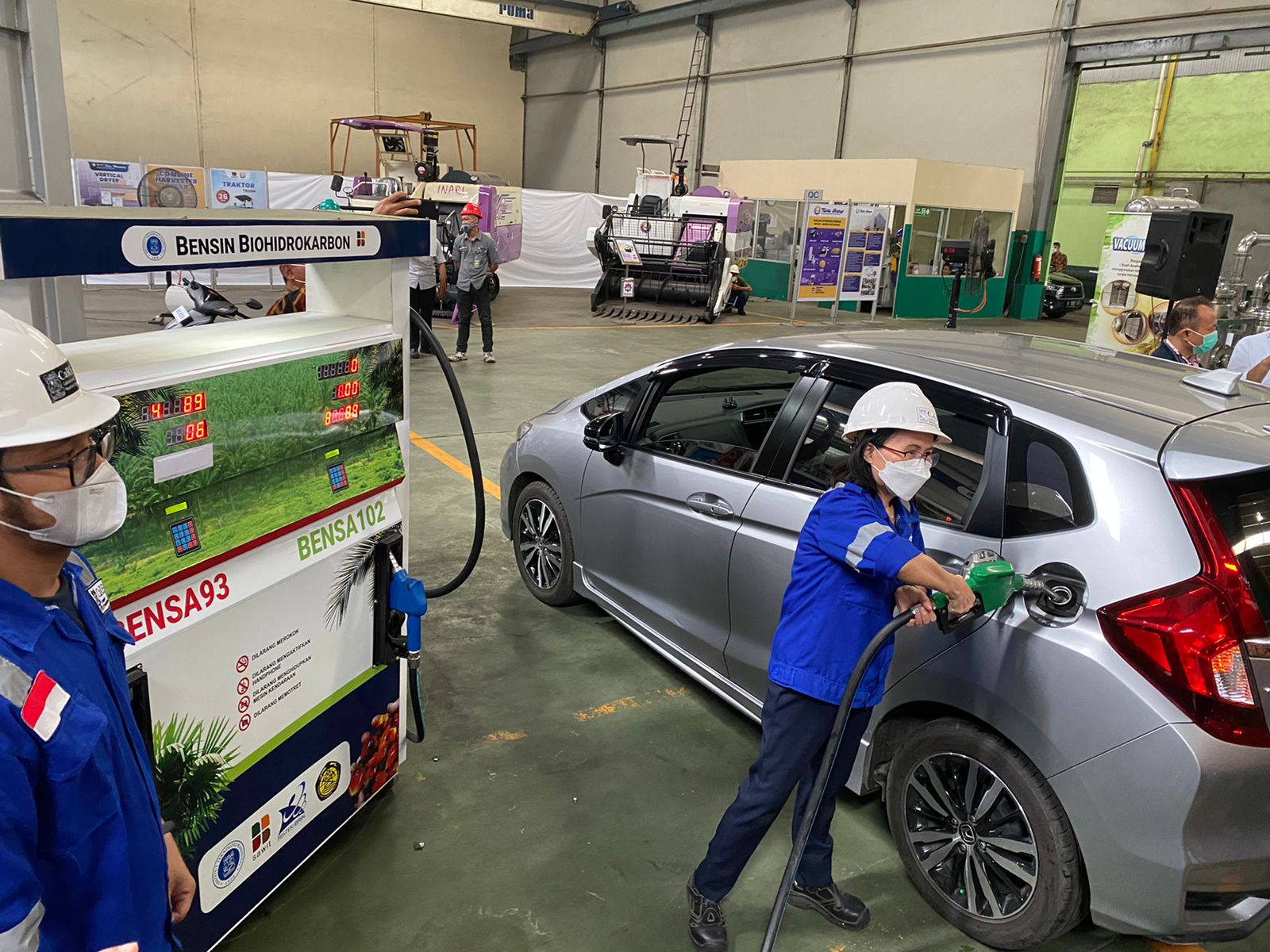
Indonesia–the largest palm oil-producing nation in the world which currently is producing 49 million tons of CPO each year and at the same time, the second-largest oil importer in the world–is very interested in developing palm gasoline production technology.
For this, ITB in cooperation with PT Energy Management Indonesia is developing a conceptual design of a palm gasoline factory with a capacity of 50.000 tons/year. This production unit can be developed so that it can be built independently in palm oil centers that are spread throughout Indonesia.
"Based on the instruction from President Joko Widodo, we have to refine our CPO first before exporting it because we have a large production. For this, we will try to convert CPO into IVO. A prototype with a scale of 6-7 tons per hour has already been built and is currently located in Musi Banyuasin District (MUBA), South Sumatra" said Dr. Ir. Melia Laniwati Gunawan, M.S. from the Chemical Reaction Technology and Catalysis Research Group – FTI, a member of Merah Putih Catalyst team to ITB PR, Thursday (13/1/2022).
IVO is used as a raw material to produce Bensa in the palm gasoline prototype production unit. Conversion from Ivo to gasoline requires a catalysator. Thus, we need a reactor that can produce the catalyst. "With funding from BPDPKS, we also developed a set of reactor units to produce the catalyst. A catalyst factory with a scale of 40-50 kg per batch is located on the ITB Ganesha Campus" said Dr. Melia. The formula and procedure for manufacturing the catalyst are the results of research by the Center for Catalyst Engineering, Institut Teknologi Bandung.
The gasoline that was produced from palm oil has a Research Octane Number, RON of 105-112, which is very high. So, as explained by Dr. Melia, the product can be mixed with naphtha produced from fossil fuel. "Naphtha has an octane number of 70-80. So, if we mixed them with a certain ratio, we could produce RON 93 Bensa, that is what we have demonstrated at the Workshop," said her.
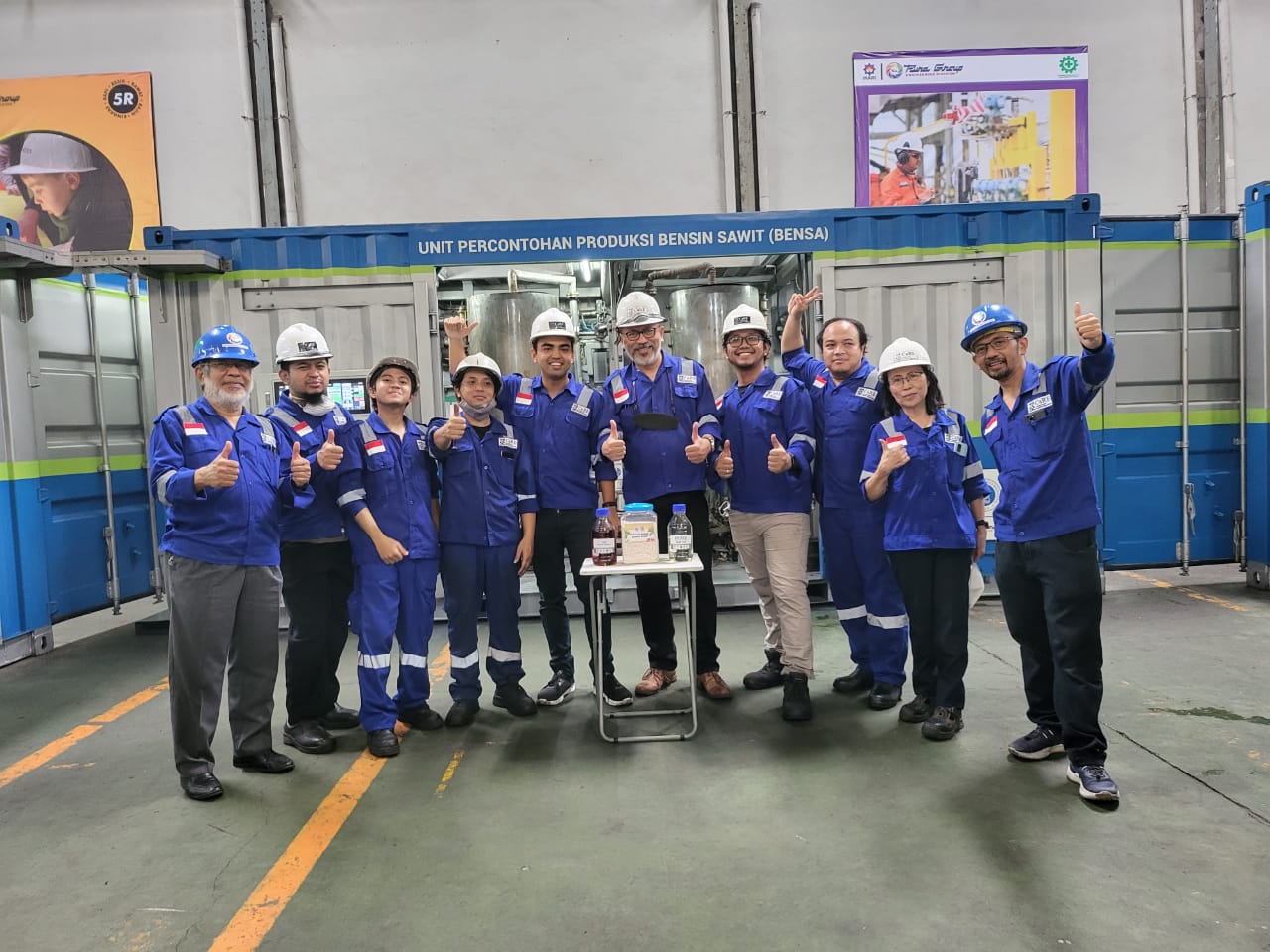
Due to the success of the Bensa demonstration and experiment, optimization of production capacity and reactor were planned, then a Detail Engineering Design (DED) will be created. After that, it is possible to construct a large-scale production unit using the catalyst that is produced at ITB.
"We hope that this production unit can be constructed in a palm oil plantation so that bensa can fulfill the fuel needs of palm oil farmers. In this way, it will make it easier for the government (Pertamina) to supply fuel in the remote areas," she explained.
"So far the government has been importing crude oil and refined oil. It is expected that if we can refine palm oil to bensa, our imports will decrease," added Dr. Melia.
The development of Bensa could be accomplished through cooperation with multiple parties, such as the Ministry of Energy and Mineral Resources (ESDM), National Research and Innovation Agency, Center for Catalyst Engineering, Institut Teknologi Bandung, Chemical Reaction and Catalyst Engineering Laboratory from the Chemical Engineering Study Program and the Bioenergy and Chemurgy Engineering Study Program – FTI – ITB, PT Pura Barutama, PT Kemurgi Indonesia, Biohydrocarbon Society Indonesia (MBI), PT Energy Management Indonesia.
Translator: Favian Aldilla R (Civil Engineering, 2019)

scan for download





